Skydiving Myths Debunked: Separating Fact From Fiction
Tandem Skydiving
Posted by: James La Barrie
2 years ago
Since the beginning, skydiving has long captured the imagination of curious minds and adventure-seekers alike. The thought of jumping out of an airplane, freefalling through the sky, and being held up by nothing but a parachute evokes a mix of fear and excitement. For some, skydiving is a mysterious adventure that is only dreamed about; for others, it’s a way of life. In general, skydiving and its people are highly misunderstood, which is why we’re here to separate the skydiving facts from the skydiving myths.
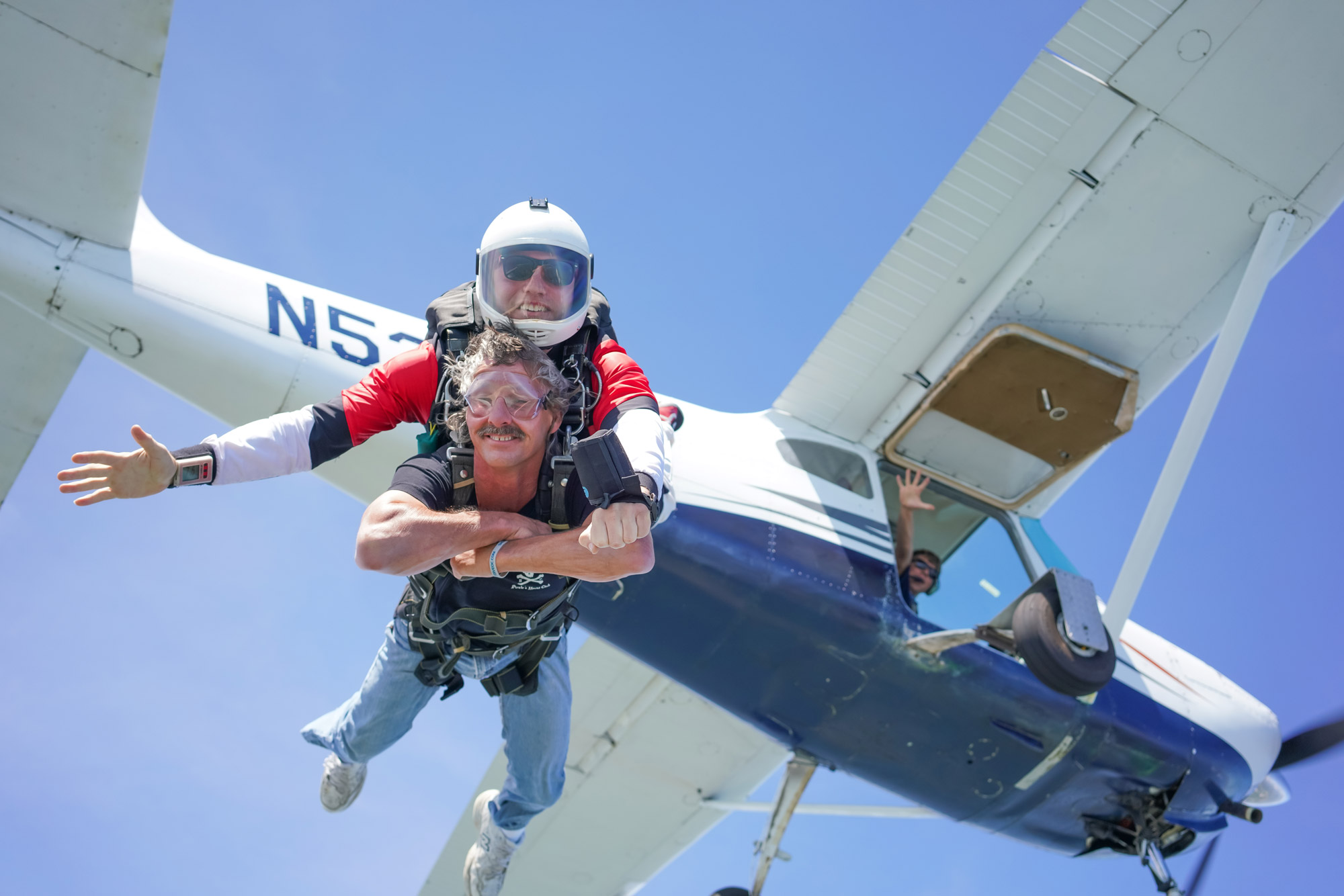
Skydiving Myth #1: Skydiving is Extremely Dangerous
One of the most widespread myths about skydiving is that it is an extremely dangerous activity. While it is true that skydiving involves inherent risk, the sport is less risky than the media would have you realize. This is due to a number of factors, including strict safety standards; extensive training policies and programs for all skydivers; improvements made on skydiving equipment (thank you modern technology!); annual Safety Day training for all skydiving centers/staff; and stringent analysis of data annually collected by the United States Parachute Association (USPA). The truth is: the skydiving community is extremely safety conscious.
In 2023, around 42,000 USPA members made 3.65 million jumps, 10 of which resulted in civilian skydiving fatalities. This is approximately 0.27 fatalities per 100,000 jumps, or about 1 death per 370,000 jumps – the lowest fatality rate in recorded skydiving history. The odds for tandem skydiving is even better with 1 student fatality per 500,000 jumps on average over the past 10 years.
By no means are we saying that skydiving is safe, but extremely dangerous? Not so much!
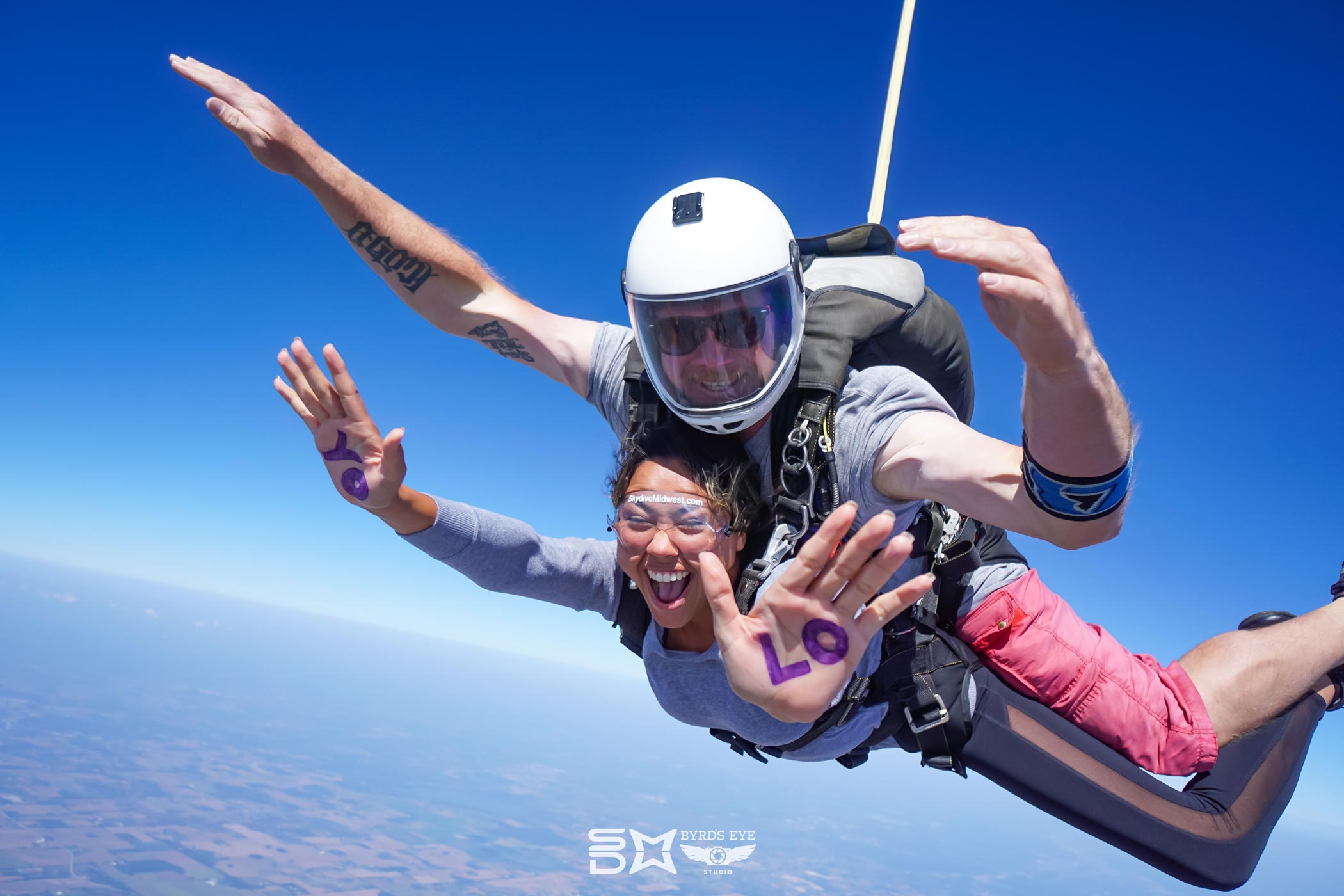
Skydiving Myth #2: All Skydivers Are Crazy
Another common misconception is that all skydivers are crazed adrenaline junkies or daredevils with no respect for life. In reality, skydivers come from all walks of life and backgrounds and each one skydives for different reasons! While some may thrive off of the quick adrenaline rush, many skydivers are passionate about the sport and enjoy the sense of freedom, challenge, and community. Skydiving appeals to individuals for various reasons, especially those seeking adventure and personal growth.
Contrary to the stereotype of the “crazy” skydiver, most enthusiasts approach the sport with a healthy respect for life. We foster a culture of safety and a commitment to mastering the skills involved to help ourselves and others become better, safer skydivers.
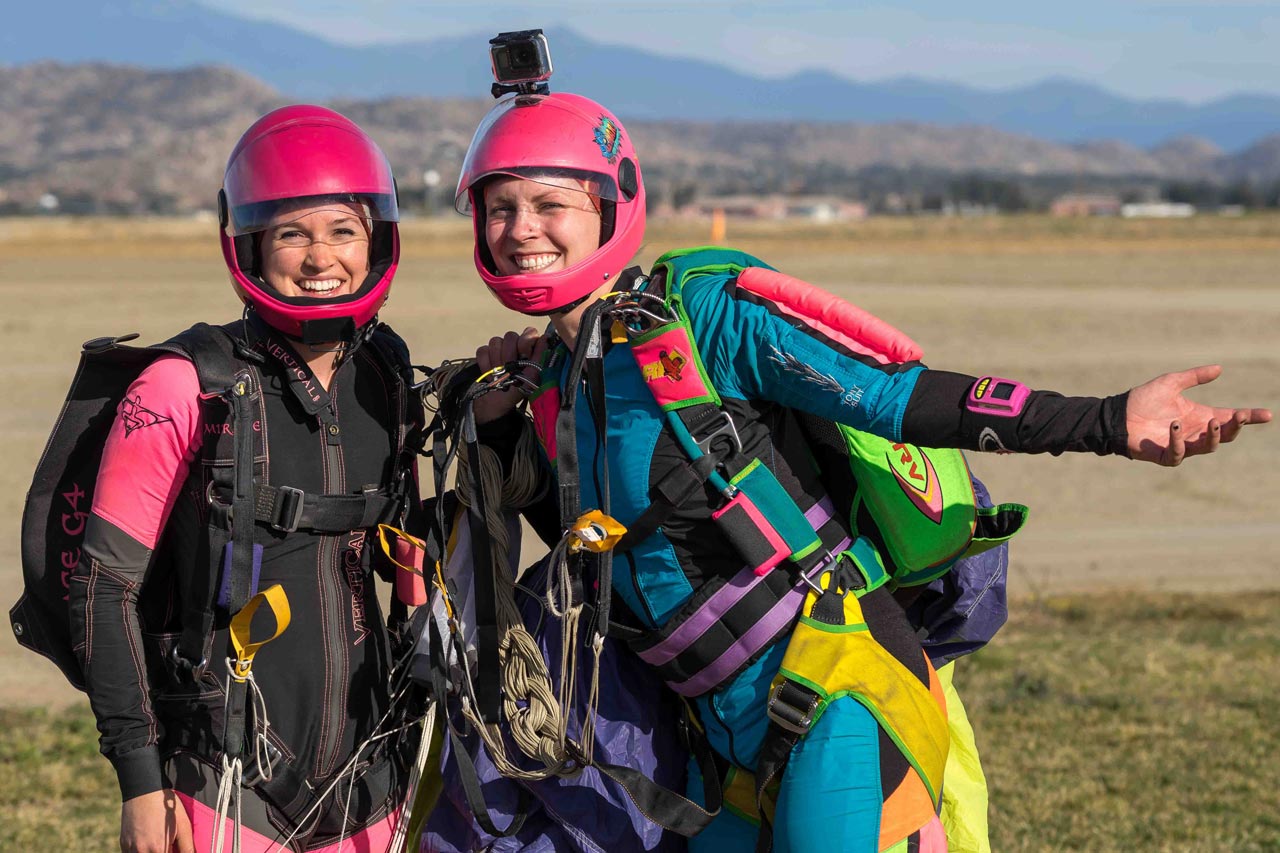
Skydiving Myth #3: You Can Talk During Freefall
Avid skydivers find that one of the more amusing myths about skydiving is the idea that you can have casual conversation while zooming through the sky at terminal velocity. In reality, the rush of wind and noise during freefall makes it nearly impossible to communicate verbally. Attempting to have a conversation mid-freefall would be like shouting into a hurricane – pointless and silly!
However, while verbal communication may be out of the question, skydivers often use hand signals to communicate with each other in the air. These signals are simple yet effective ways to convey important information such as altitude, body position, direction of flight path, and preparing to deploy the parachute. This skydiving myth usually comes from popular Hollywood films such as Point Break.
Skydiving Myth #4: You Go Up When the Parachute Opens
An interesting skydiving myth is the illusion of experiencing a sudden jolt of upward movement when the parachute opens. In actuality, the transition from freefall to canopy flight is typically smooth and gradual. When the parachute opens, it creates drag, slowing down the descent rate and bringing you to a more controlled descent rate in preparation for landing.
Modern parachutes are designed to open gently, reducing the risk of discomfort or injury upon deployment. Experienced skydivers often describe the feeling of parachute deployment as a moment of calm and serenity, as they transition from the high-adrenaline freefall to the peacefulness of canopy flight.
We think this myth comes from the angle of the videographer during parachute deployment. What’s happening in this moment is the skydiver in view is slowing down the descent rate by opening the parachute while the skydiver who is filming is still falling at their terminal velocity – thus, making it look like the skydiver or tandem pair is going up!
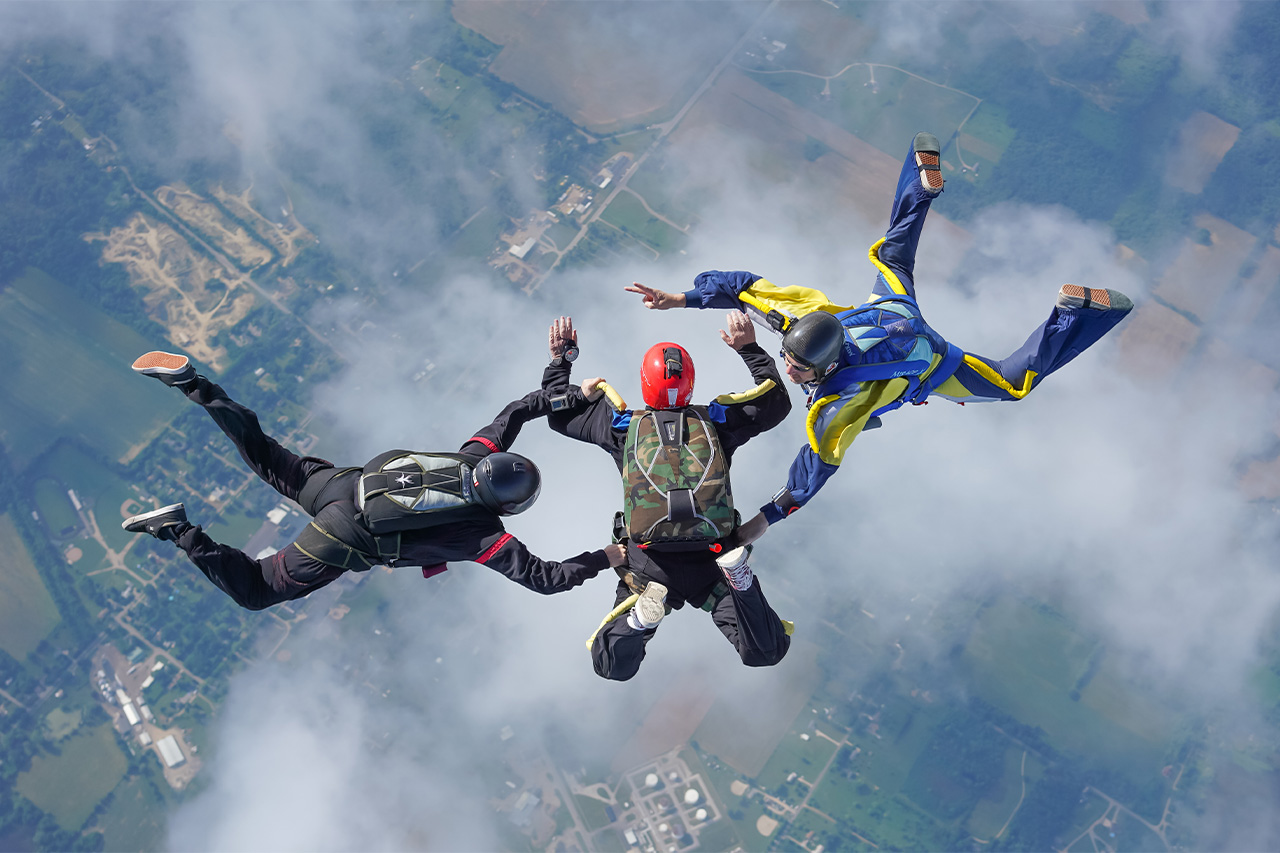
Skydiving Myth #5: It Takes a Long Time to Learn to Skydive
The length of time it takes to learn to skydive is unique to each individual. While mastering the sport of skydiving does require time, dedication, and resources, modern training methods have streamlined the learning curve, allowing students to progress more quickly than ever before.
Most skydiving centers offer accelerated training programs such as the Accelerated Freefall Program (AFF), that allow students to complete their first solo jump after just a day or two of instruction (depending on weather, of course). These programs combine classroom learning with practical training in a controlled environment, enabling students to build confidence and proficiency at their own pace. Most students take about a month to complete their AFF training to receive their skydiving A-license – but we’ve seen it done in just a week, and we’ve seen it take all summer! It all depends on your schedule, budget, and progression.
Skydiving is a lifelong learning journey with opportunities for skill development and progression at every level of the sport. Whether you are interested in formation skydiving, canopy piloting, wingsuiting, or freeflying, there’s always something new to explore and master in the world of skydiving.
When it comes to something as misunderstood as skydiving, the myths are almost never ending and we’ve heard just about all of them! The best thing to do is to discover the truth of skydiving on your own by experiencing it for yourself and asking the professionals upfront.
Have more questions or heard a myth about skydiving that you’d like to debunk? Contact your dropzone to get the facts. Blue skies, myth busters!
Categories:
You May Be Interested In:
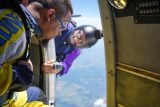
Preparing for a Skydive: Physical and Mental Fitness Tips
1 year ago by James La Barrie

The Psychological Benefits of Skydiving: Overcoming Fear & Building Confidence
2 years ago by James La Barrie

Tandem vs. Solo Skydiving: Which Experience is Right for You?
2 years ago by James La Barrie

Why is Skydiving So Expensive?
2 years ago by James La Barrie
DZ Locator
Find a skydiving center near you.
